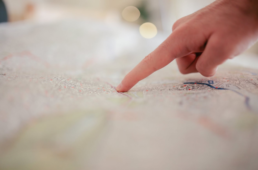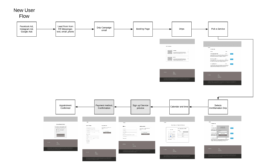Introduction
Customer personas, your businesses sales and marketing efforts and distribution channels can be tied together for an excellent user experience through customer journey mapping.
Customer journey mapping for digital channels identifies all customer touchpoints. It lets you understand which digital channels can be best utilized for a specific section of your audience and how you can do so.

1. Customer Journey Mapping
What is customer journey mapping?
Customer journey mapping creates a visual representation of the different touchpoints your users use to interact with your brand. It gives you variations of how different people with different personas know and hence relate to your brand from the first step of discovery to engagement.
Why should you create it?
Customer journey mapping directs your efforts and resources to improving the digital customer experience rather than have a one-size fit strategy for all users.
For example, if a customer group comes to you via your website but continues the journey through your mobile app, you are better positioned to personalize for that type of user. In essence, it aligns your marketing team to the exact sales sequence and stages to get results. This positions your product as the preferred choice over other similar ones thereby improving customer acquisition.
When do you use it?
When creating digital initiatives for personalizing the user experience, customer journey mapping explores personalized interactions like in-app messages, customized notifications, intelligent prompts, and mobile surveys to gauge user perception and improve overall user experience. The 3 main benefits utilizing customer mapping–
Perspective: These maps give a bigger picture overview to zoom out and see outside of your organization’s perspective and make things more specific to your customer.
Identify Opportunities: Instead of just knowing something isn’t working- maps can help you identify the why.
Create New Solutions: You can use your new insights to illustrate new ideas and concepts for the future with others on your team, as you are more aligned and organized sharing a map with them.
2. Elements of Customer Journey Mapping

While planning a customer journey map understanding your customer type (personas), their goals, and how you can meet these goals work as the foundation of this journey. A customer journey map starts with these elements.
Create and validate user personas
The best time to start creating user personas is when you have moved onto the growth stage, where you have many users to segregate into groups. By using data collected from surveys, market research, and stakeholder responses, you will be able to flesh out a few personas to map your customer journey.
Map customer goals and behaviors
The next step is to identify customer goals or user intent to interact with your product or service. While some users will want to know about your product and how it can help them, others will invest time to compare or consider buying your product.
Identify and align the engagement touchpoints to customer goals
The next step is matching your customer interactions with your digital channels for a given goal. By doing so, you are strategically building a human-centric digital experience for your customers. You get to meet your customers where they are.
Measure and Iterate
How do you measure engagement for different touchpoints? How successful are you in improving the customer experience? What is the result of such improvements?
3. How do you create a customer journey map? An Example
First, let’s take a look at the customer lifecycle stages to understand the touchpoints that will be needed along the way:
Awareness : When someone is new to a product, thus rely on word or mouth, traditional and social media to inform them
Consideration and Decisions : Looks into websites, mobile apps, and media on how the product or service performs as compared to other similar products.
Delivery : Once a customer is convinced on your product and they purchase it
Loyalty : If the product exceeds expectations and the customer is happy, they will likely return for the same experience
By understanding the customer lifecycle above, you can align these touchpoints to your client to better support their needs along the way and overall goal.
To give you an idea of how you can create a customer journey map for your company, let’s take the case of a spa booking massage service: There are 3 main things to focus on to start creating your journey map–
Choose a Scope (end to end experience vs. detailed step in higher level journey): In this example I am choosing an end to end scope- from the advertising to the appointment confirmed
Choose a persona- main actor(s)/perspective(s): In our example, this would be from the spa’s business point of view
Format- labeling the rows and columns and how you want it organized : In my example, we have kept it very basic and simply labeled each box with the task needed, arrows following along, and additional notes/photos below certain tasks (e.g. pick a service)

After that it’s all about filling in the information. This can be as simple or detailed as you want to help remember and get done the tasks you need. You can also add lanes underneath with more detail. In many cases, it can help to put in the end goal first and then go back to the beginning to think through each step.
Conclusion
With the fast growth of digital and brand marketing and rapid consumer acceptance, it makes sense to focus on the mobile user journey mapping that is fluid and creates an end-to-end personalized customer experience than a traditional digital one. Mobile customer journey taps into the customer who skips to their channel of preference, making it a bit easy to gain and further retain new customers.
Have you used the Customer Journey Map before? How has it helped you know and improve UI/UX? Share it with us in the comments!

